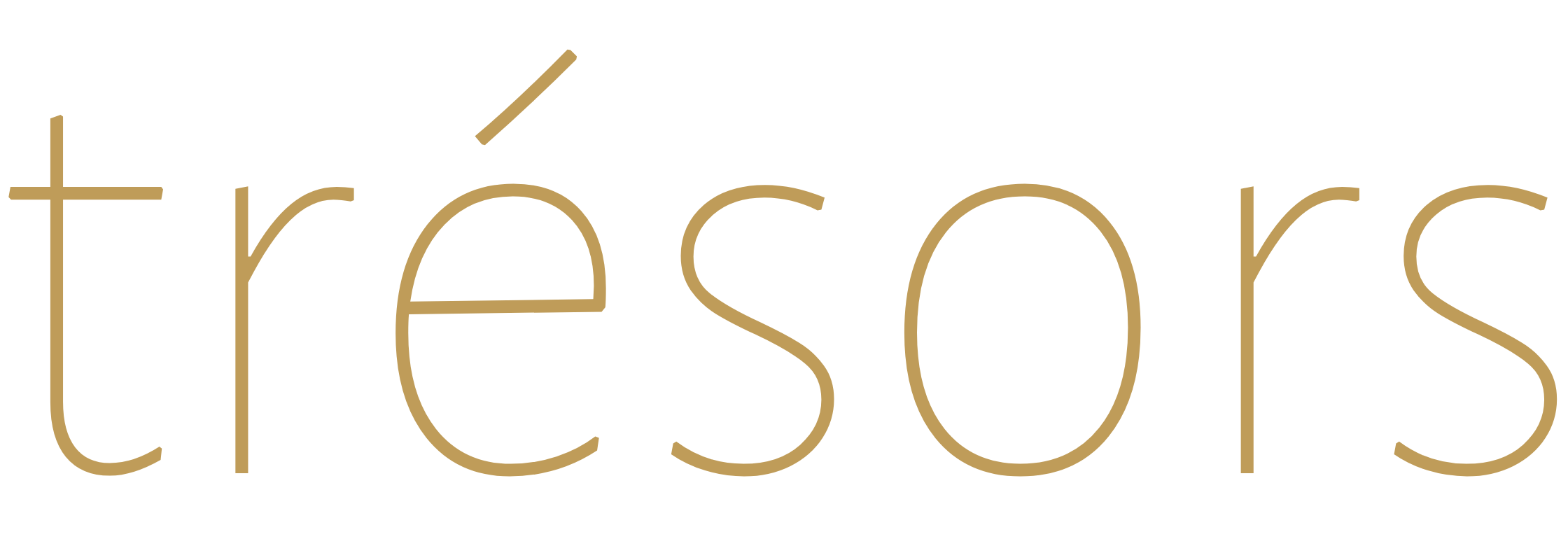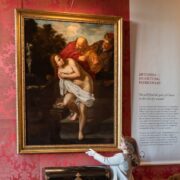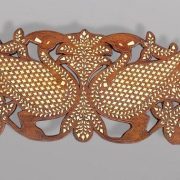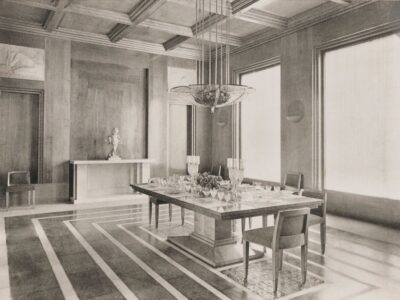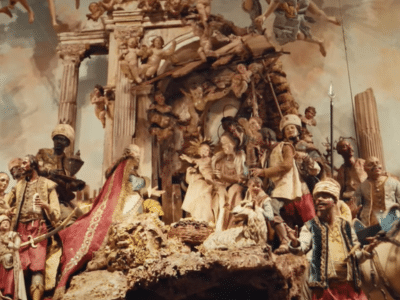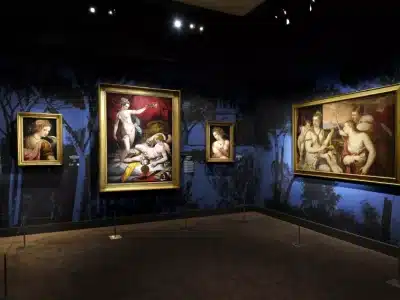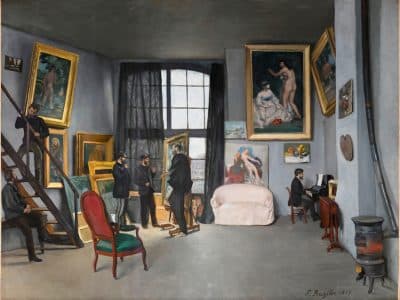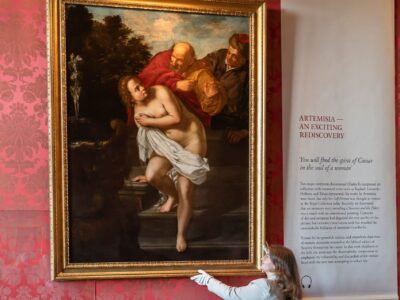400 years ago, in September 1623, the first stone of what was at the time a hunting lodge for Louis XIII was laid. The modest lodge is now long gone. In its place, the Versailles castle, its gardens and a park have blown away all foreign courts and dignitaries for centuries.
Fall is a marvelous season to be dazzled by what Versailles has to offer. There is so much to do for a special day there that it is a thorny task to choose what to focus on. To give you suggestions for a grand day at the Palace of Versailles, we decided to splurge on the latest exhibitions and renovations.
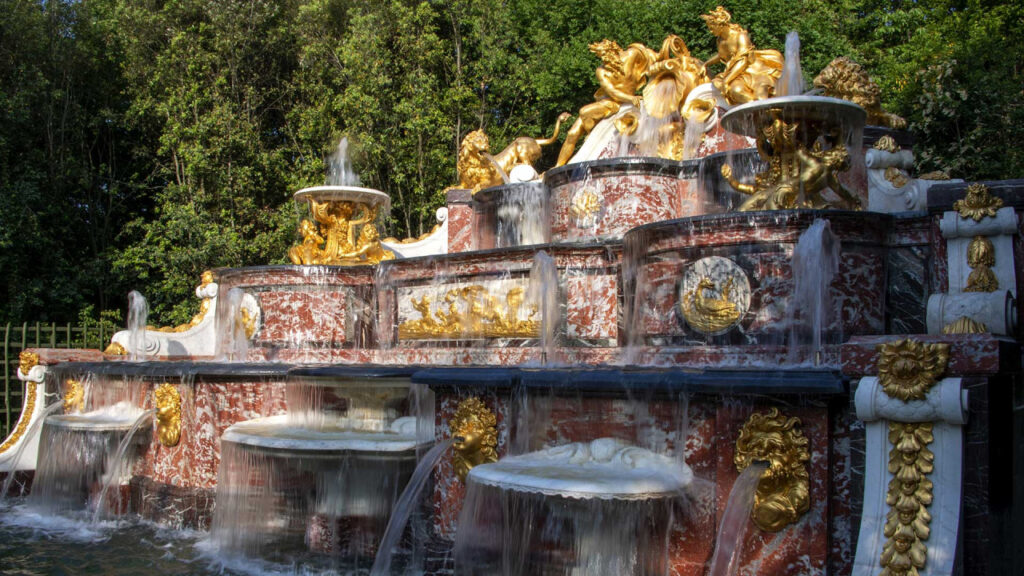
The splendor of this monumental fountain created by Hardouin-Mansart in 1702 for the Trianon. The gilt lead sculptures and the polychrome marbles are gleaming again after 18 months of renovation. © Palace of Versailles © Didier Saulnier
Start Your Day With a Breakfast in Versailles and a Visit to Marie-Antoinette
Ticket: Marie-Antoinette in Private + Breakfast
Since last June, Marie-Antoinette’s private chambers reopened. Imagine on two floors a labyrinth of small rooms that live and breathe femininity. Only four years after her arrival in France, Marie-Antoinette started decorating these rooms to her daring taste from 1774 on. These rooms were accessible to a few hand-picked people. They were geared towards the Queen’s private and intimate life, including some rooms for her close staff. Two rooms were also for Count Axel de Fersen. It will certainly not help dispel the rumors surrounding the relations between the Queen and the Count. We will not try to unravel this mystery today…
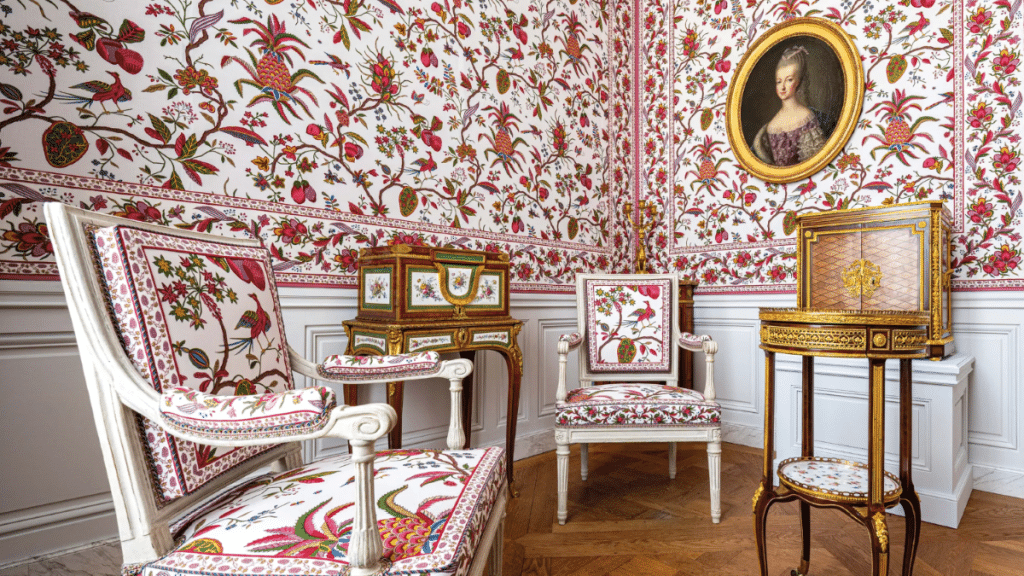
The magnificent Great Pineapple toile de Jouy fabric is worthy of the Queen Boudoir. © Palace of Versailles, Dist. RMN © T. Garnier
The stars of the second floor are flowery toile de Jouy fabrics with different prints and shades created around 1784. One of them, the Great Pineapple fabric, is extremely luxurious with 22 colors. Pineapple was a fashionable motif that Marie-Antoinette truly relished. In the garderobe, protected from natural light, you can now enjoy the magnificent collection of Japanese lacquer that belonged to Marie-Antoinette. In the dining room, an exceptional 18th-century clock is sitting on the fireplace mantle: King Louis XV turned the ivory himself (it was a popular aristocratic passtime) and offered the clock to his daughter Adélaïde.
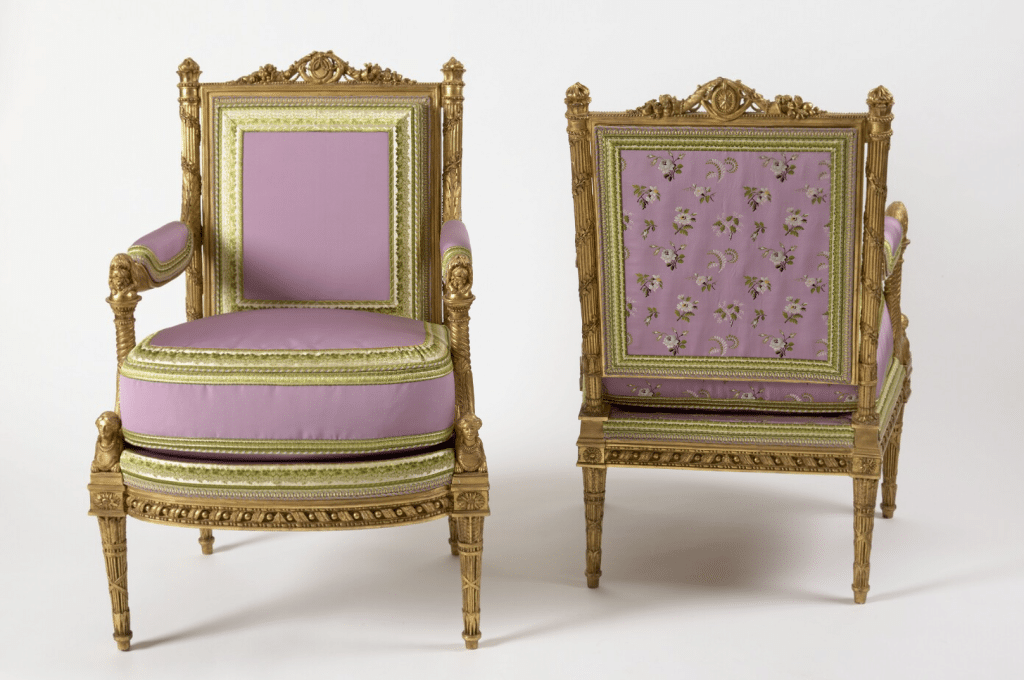
The pair of armchairs by Georges Ier Jacob in the Méridienne room. © Palace of Versailles, Dist. RMN © Christophe Fouin
The first floor was modified later by Queen Marie-Antoinette. The Cabinet de la Méridienne is particularly delightful as it was decorated during the second pregnancy of Marie-Antoinette, a joyful time. The ornaments celebrate love and the coming of an heir. The new fabric selected for this installation matches the 1784 Queen’s choice: lilac silk with lime green accents for the trimmings brings softness. It contrasts with the Golden Cabinet refurbished between 1779 and 1784, which boasts a more lavish style: emerald green is the dominating textile color, Egyptian antiquity is the decor theme, and Riesener, the cabinetmaker, prevails.
Time to Look up to the Grand Décors of Noël Coypel (1628-1707)
Temporary exhibition: Noël Coypel, Painter of Grand Decors
A good way to rewind the time machine to Louis XIV is to immerse in Noël Coypel‘s oeuvre, celebrated in a temporary exhibition until January 28, 2024.
You may not know this artist who did not reach the fame of Charles Le Brun. Yet, this specialist of “grand décor” was an incredible colorist and draughtsman. He worked on all the major royal construction projects of the Grand Siècle and benefited from the highest favors, e.g. an apartment in the Louvre, appointed director of the Académie de France in Rome from 1673 to 1676, and director of the Académie in Paris in 1695 .
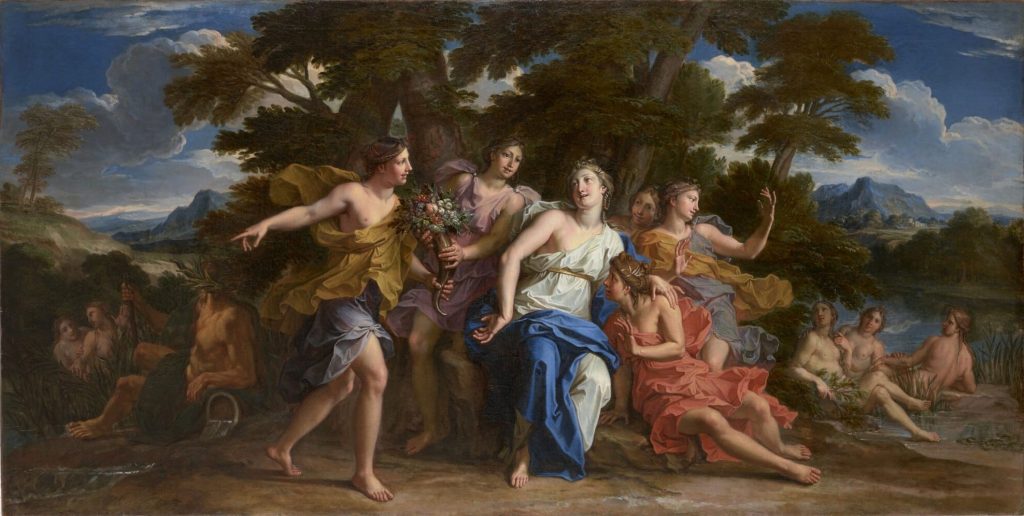
One of the Noël Coypel’s paintings at the Grand Trianon: Nymphs Presenting a Cornucopia to Amalthea. © Palace of Versailles, Dist. RMN © Christophe Fouin
His name was overshadowed by the prestigious monuments he contributed to (Versailles, the Tuileries, the Invalides, the Rennes Parliament, etc.), but it can shine again thanks to this first monographic exhibition. It will enable you to fully enjoy Versailles as the display of 90 artworks takes place both in the Grand Trianon and the Queen’s State Apartment in the palace.
A Centerpiece to the 400th-Anniversary Celebration: A Revamped Gallery of the History
Since September 15, this gallery of 11 rooms reopened with a new organization and over 120 artworks—some never exhibited before. It enables the visitors to understand the progressive transformations of the castle and the players involved in these changes, whether they be the royal sponsors or the artists.
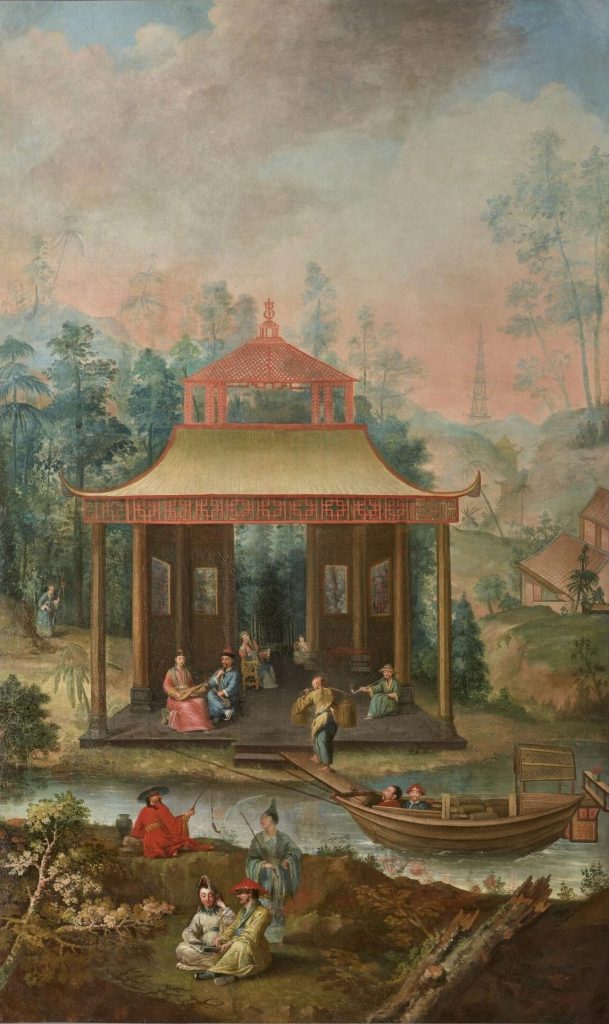
One of the eight Chinese Chamber panels (oil on canvas). By Coqueret, Frédou, de la Roche, Prévost, Jeaurat, and Marie Leszczynska. © Palace of Versailles, Dist. RMN © Christophe Fouin
For instance, are you familiar with Queen Marie Leszczynska’s artistic tastes and talents? You can now admire all the panels of the Chinese Chamber to which she contributed with her own hands. Even though, we shall not forget that the main artists for these panels were Coqueret, Frédou, de la Roche, Prévost and Jeaurat. And that preparatory drawings made by Ange-Jacques Gabriel could only send them in a promising direction.
Do Not Miss This Highly Symbolic Place of the French Revolution: The Royal Tennis Court
Visits only on the weekends: The Royal Tennis Court of Versailles
In terms of living emblem of the Revolution, the Versailles Royal Tennis Court is up there with the Bastille. However, the Royal Tennis Court has an unbeatable advantage over the Bastille prison: it is still standing today.
On June 20, 1789, in this room, the representatives of the Third Estate and some members of the nobility and clergy that had formed a National Assembly a few days prior, swore an oath. They would not separate and would reassemble wherever circumstances require it until a constitution was drawn up.
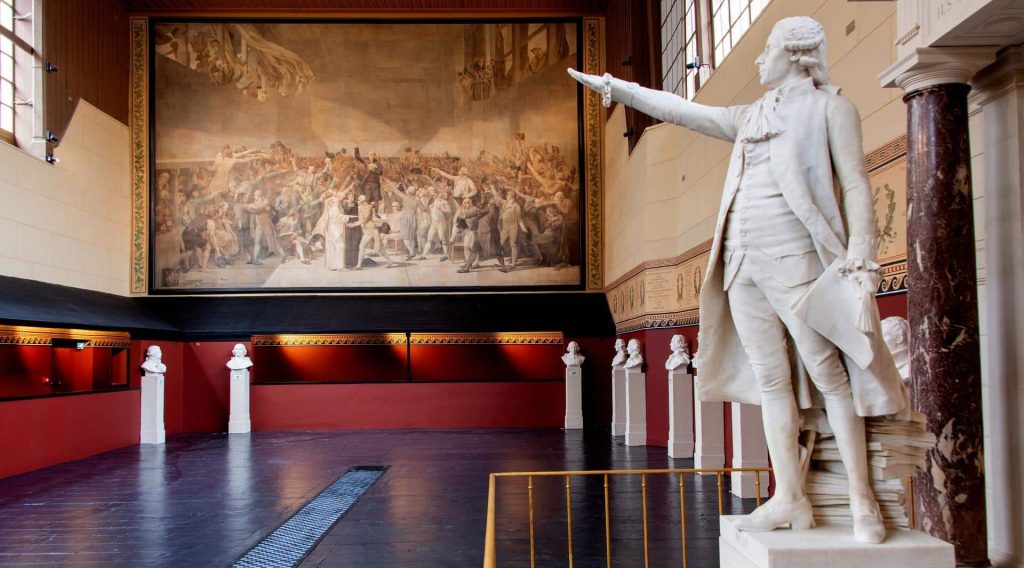
Versailles Royal Tennis Court with the statue of Bailly by René de Saint-Marceaux and the monumental painting of the oath by Luc-Olivier Merson. © Palace of Versailles © Didier Saulnier
Already in 1790, this place was officially regarded as a memorial of the Revolution. Jacques-Louis David was asked to immortalize this oath. He did a preliminary drawing and a canvas for a monumental painting planned for this place. Due to the chaos of the Revolution, he was never able to finish it. Nonetheless, for a brand new Museum of the Revolution to be installed in the tennis court, Luc-Olivier Merson was commissioned the painting based on David’s work in 1882. Even though the museum is now gone from this place, the oath painting still celebrates this important day for the French nation.
Close Your Day With an Equestrian Show at the Great Stables
Visits only on the weekends (and some Wednesdays): Program of the National Equestrian Academy of Versailles
After a 400-year journey in Versailles, attending a live-art performance in such a historic and artistic place is a wonderful conclusion. Heritage is inspiring in so many ways.
After the show comes a free tour of the stables. The Great Stables and Small Stables make the Royal Stables, conceived by Jules Hardoin-Mansart and built from 1679 to 1682. They are exceptional by their size. In the 18th century, over 2,000 horses were housed there together.
You May Like
Louis XIV Arts | Louis XV Arts | Louis XVI Arts | Sèvres Porcelain | Chinoiseries | Asian Boxes | Mythological & Allegorical Paintings (17th-18th Century)

